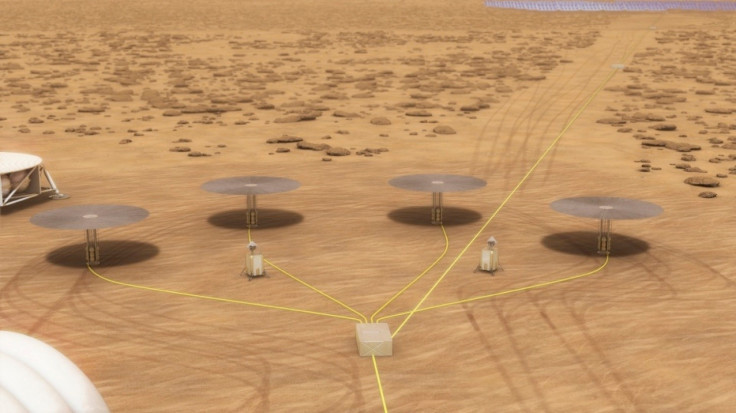What is Kilopower? Nasa's space nuclear reactor could be the key to colonising Mars
Nasa hopes that the Kilopower reactor would also be used in its other space exploration missions.
Space exploration could be revolutionised by Nasa's space nuclear reactor tech – the Kilopower program – which the space agency will begin testing this month. The Kilopower program could be the key to future colonisation of the Red Planet.
According to Nasa, the space nuclear reactor tech could "literally empower" future Mars habitats, transforming Mars' resources into water, oxygen and fuel – all the necessary requirements for humans to live on Mars long-term.
"A space nuclear reactor could provide a high energy density power source with the ability to operate independent of solar energy or orientation, and the ability to operate in extremely harsh environments, such as the Martian surface," Patrick McClure, project lead on the Kilopower work at the Los Alamos National Laboratory, said in a statement.
David Poston, the reactor's chief designer said that the technology could also be used in Nasa's other space exploration missions. However, the pioneering project will require that scientists keep it simple. "Simplicity is essential to any first-of-a-kind engineering project – not necessarily the simplest design, but finding the simplest path through design, development, fabrication, safety and testing," Poston said.
Kilopower could be key in producing power on Mars
The Kilopower could produce continuous electricity for 10 or more years in the harsh and extreme environments of the Red Planet. The technology is not dependent on solar power, which means that it could meet power demands even at night or during prolonged "sunlight-reducing" dust storms.
"It solves those issues and provides a constant supply of power regardless of where you are located on Mars. Fission power could expand the possible landing sites on Mars to include the high northern latitudes, where ice may be present," said Lee Mason, STMD's (Space Technology Mission Directorate) principal technologist.
"The big difference between all the great things we've done on Mars, and what we would need to do for a human mission to that planet, is power," Mason added. "This new technology could provide kilowatts and can eventually be evolved to provide hundreds of kilowatts, or even megawatts of power. We call it the Kilopower project because it gives us a near-term option to provide kilowatts for missions that previously were constrained to use less. But first things first, and our test program is the way to get started."
What about the hardware?

According to Nasa, the Kilopower projects prototype system will feature a solid, cast uranium-235 reactor core, the size of a "paper towel roll". Sodium heat pipes will be used to transfer the reactor heat, which will then be transformed into electricity by high-efficiency Stirling engines.
Stirling engines are like automobile engines, using heat to create pressure forces, in turn generating electricity.
According to Mason, the Kilopower hardware will undergo a step-by-step testing procedure, spanning around 28 hours. The testing will take place in US Department of Energy's (DOE) Nevada National Security Site. "The upcoming Nevada testing will answer a lot of technical questions to prove out the feasibility of this technology, with the goal of moving it to a Technology Readiness Level of 5. It's a breadboard test in a vacuum environment, operating the equipment at the relevant conditions," the project's lead researcher Marc Gibson said.
"The reactor technology we are testing could be applicable to multiple NASA missions, and we ultimately hope that this is the first step for fission reactors to create a new paradigm of truly ambitious and inspiring space exploration," Poston said.






















